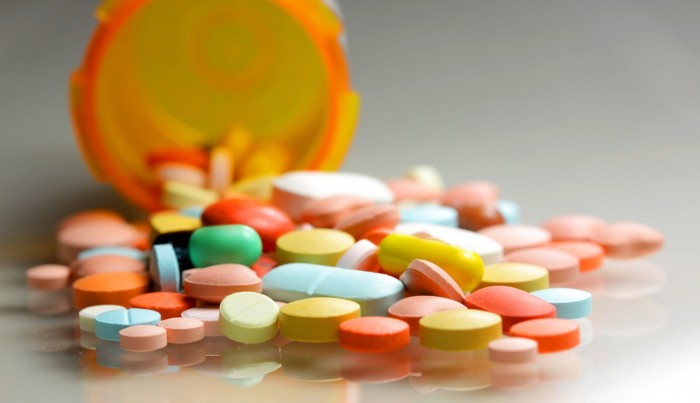Target Prices to Control Prescription Drug Spending, AHA Advises
A cap on average sales price inflation and restrictions on initial prices would help to reduce prescription drug spending for providers, the AHA said.

Source: Thinkstock
- With prices, not utilization, driving prescription drug spending at hospitals and health systems, the American Hospital Association (AHA) recently called on policymakers to focus on controlling costs via average sales price (ASP) control.
In a letter to the Medicare Payment Advisory Commission (MedPAC), the hospital group pushed for an ASP inflation cap for Medicare Part B-covered drugs to curb prescription drug spending for providers.
“Just as many patients face the challenge of high drug prices at the pharmacy, hospitals, as major drug purchasers, also face significant resource constraints and trade-offs as spending on drugs increases,” the group wrote.
Hospital spending on drugs in the inpatient space increased 38.7 percent per admission between 2013 and 2015, while retail spending on prescription drugs rose 10.6 percent at the same time, a 2016 AHA and Federation of American Hospitals (FAH) analysis found.
Furthermore, over 90 percent of hospitals in the study said that inpatient prescription drug price hikes had a moderate or severe impact on their ability to manage healthcare costs.
READ MORE: Pres Trump Eyes 340B Drug Reforms to Lower Prescription Drug Costs
Hospitals and health systems are likely to see their prescription drug spending increase in the near future. A major group purchasing organization recently projected drug prices to grow over 7 percent from July 2018 through June 2019, and similar annual growth rates should last through 2026.
The AHA pointed to drug manufacturers as the cause for rising prescription drug spending.
“[Drug manufacturers] are responsible for setting the price of a drug at $89,000, $159,000, or even $850,000 for a course of treatment,” the AHA explained. “They also solely decide whether to increase that price by 20 percent, 948.4 percent, or 1,468 percent. With new immunotherapies coming to market at launch prices of $373,000 and $475,000, solutions for tackling pharmaceutical costs are essential to ensure access to lifesaving treatments for those who need them.”
MedPAC also reported in its June 2017 report to Congress that price growth was responsible for approximately one-half of the growth in Part B drug spending between 2009 and 2013.
That year, MedPAC aimed to tackle prescription drug spending by implementing an inflation cap on the ASP for Part B-covered drugs. A cap on ASP inflation would require drug manufacturers to pay rebates to the federal government when their ASP growth increases beyond an inflation benchmark.
READ MORE: Prescription Drug Rates Remain Top Healthcare Supply Chain Issue
However, policymakers never implemented the recommendation.
The AHA reiterated their support for the policy change in their most recent letter to the commission and took the recommendation a step further. The group called on Medicare to apply the inflation cap to lower-cost drugs.
Ensuring that lower cost drugs that are frequently used by hospitals and health systems do not face substantial price hikes is essential to controlling drug spending, the group argued.
Annual price increases of 10 or 20 percent on commonly used older generic drugs resulted in even more financial burden on hospitals than large price increases for other branded and generic drugs, the 2016 AHA and FAH analysis showed.
“Given that overall Medicare Part B drug spending is influenced by both price and volume, the AHA strongly recommends that MedPAC consider including low-cost drugs as part of an ASP inflation cap approach,” the hospital group wrote.
READ MORE: Could More Competition Reduce Rising Prescription Drug Costs?
MedPAC should also consider limiting excessively high launch prices for prescription drugs in conjunction with implementing an ASP inflation cap, the AHA advised.
The group warned the commission that an ASP inflation cap may incentivize drug manufacturers to launch their drugs at excessively high prices to protect their revenues.
“Historical growth in ASP plus six percent payment rates are driven solely by manufacturer pricing decisions, and there is currently no national ceiling for a drug’s initial price,” the AHA explained. “As noted earlier, new innovative therapies are coming to market with prices in the hundreds of thousands of dollars.”
Therefore, policymakers should consider protections against excessively high launch prices to ensure the inflation cap reduces prescription drug spending.
Another strategy for reducing prescription drug spending for Medicare Part B is to maintain the ASP plus six percent payment methodology, the letter stated.
MedPAC has floated the idea of eliminating the Medicare Part B reimbursement model. The commission contended that the model may incentivize providers to use costlier drugs to boost their reimbursement revenue.
In its place, the commission suggested reducing the Medicare reimbursement rate to providers by basing the ASP add-on amount on the inflation-adjusted average price.
However, the AHA argued that MedPAC’s recommendation would “unfairly penalize providers for the rapid increase in manufacturer drug prices, which are clearly outside of provider control, and reduce resources for providers to sustain critical functions in storing and handling necessary pharmaceuticals.”
In addition to Medicare Part B recommendations, the AHA also called on MedPAC to implement several Part D changes. The group advised the commission to test modifications to the Part D reinsurance program, mandate inflation-based rebates for Part D-covered drugs, and develop provider- and patient-friendly reports on drug pricing.
“The Medicare program and its beneficiaries cannot continue to the bear the increased cost of pharmaceutical drugs. We appreciate your consideration of these issues during your future discussions on Medicare Part B and Part D drug spending,” the group concluded.
